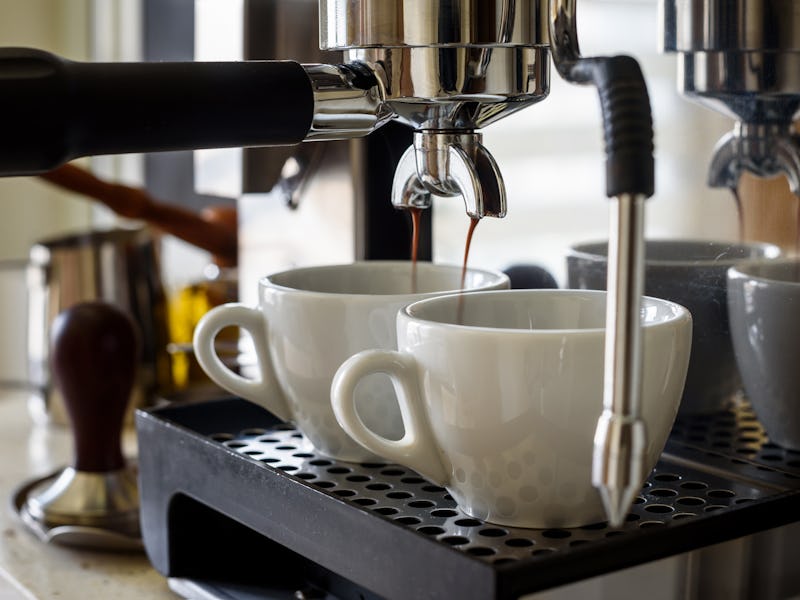Angelo Moriondo: How the father of the espresso machine used science to make coffee
The smooth science of brewing espresso, explained.

Modern coffee shops would be nothing without espresso. Whether you’re ordering a double shot in a little white cup or a foamy latte with extra syrup, your barista prepares the same potent brew by blasting water through a pad of tightly-packed espresso grounds.
But brewing espresso is a relatively new invention. In 1885, Angelo Moriondo of Turin, Italy patented the first machine that used steam pressure to brew beans. As of today, he was born 171 years ago (which is why he’s the subject of today’s Google Doodle).
Moriondo’s machine never made it to commercial production, but it paved the way for the espresso machines we know today. The principles it used to brew the popular beverage have held up over time — part of the science behind the concoction of a perfectly smooth cup.
Portrait of Angelo Moriondo with his signature at the bottom.
“Espresso is best thought of as neither a type of coffee, nor a form of beverage, but as the outcome of a particular preparation process,” writes historian Jonathan Morris in a 2010 paper in the journal Food & History.
In Italian, that process consists of the four Ms:
- Macchina (machine)
- Macinazione (grind)
- Miscela (blend)
- Mano (barista)
If you’ve used a tabletop espresso machine, you’ll know that the preparation and brewing methods are noticeably different from those traditionally used to brew coffee.
Espresso beans are the same as coffee beans, but espresso machines use an extremely fine grind to ensure that water passes through the grounds evenly. The biggest difference between brewing coffee and espresso is the use of steam and water pressure to bring out the rich flavors in the beans.
Moriondo’s original machine only used 1.5 bars of pressure, according to a report from Smithsonian Magazine. But today’s machines use at least nine bars of pressure — pushing down on the grounds with nine times the amount of pressure that Earth’s atmosphere normally exerts on everything beneath it.
An illustration of Moriondo’s espresso machine, dating back to 1884.
In the process, oils are literally forced out of the grounds to form a creamy, smooth shot topped with a light layer of foam. The result is a distinct beverage that’s ready in just a few seconds.
Speed was actually a driving force behind the invention of espresso. In Italian, the word espresso literally means “express,” and became part of Italian culture at a time when visiting coffee houses for a warm drink became part of everyday life.
Today, it’s hard to imagine coffee culture without espresso. But perfecting the art of the brew is not an easy task – hence why the barista is also an essential part of the espresso-making process. Sure, you can make your own espresso at home these days, but nothing beats the smooth taste of an expertly crafted shot of rich, creamy goodness.